Comparison of Steam Deck vs Nintendo Switch: Which device should you choose?
Nintendo released its handheld gaming device, the Switch, exactly seven years ago, bringing players back to the era of the 90s with classic games, but with improved graphics thanks to a more powerful and modern hardware platform. Meanwhile, the Steam Deck was introduced more recently, at the beginning of 2022, offering hardware powerful enough to run PC games or famous titles on "Steam."
Since both devices target the mobile gaming market, many gamers begin to wonder "which one would be a better choice." Should they go with the Nintendo Switch, a nostalgic device that will provide classic titles like Mario and The Legend of Zelda, or should they trust a powerful handheld gaming device that can run modern PC games like the Steam Deck?
Based on the configuration and unique advantages, the Steam Deck seems to be the winning device, but comparing just the internal hardware configuration is not enough. In this article, Gpwebmedia.net will help you delve deeper into all aspects of these two handheld gaming devices, comparing both devices in every aspect to ensure users can choose the most suitable device for their gaming journey.
Steam Deck vs Nintendo Switch: Which device should you choose?
1. Specifications of both devices
Before diving into actual performance, screen, battery life, or any other factors, it's important to understand the differences in the hardware configuration of these two devices. The Steam Deck clearly has an advantage from the start, but do you find it necessary?
1.1 Steam Deck
The Steam Deck uses a custom AMD chip, specifically the AMD Van Gogh APU, which is a combination of a CPU based on Zen 2 and a GPU based on RDNA 2. When launched at the beginning of 2022, Zen 4 had not been released, and Zen 3 was also quite new when the Steam Deck was still in the initial design stage by Valve.
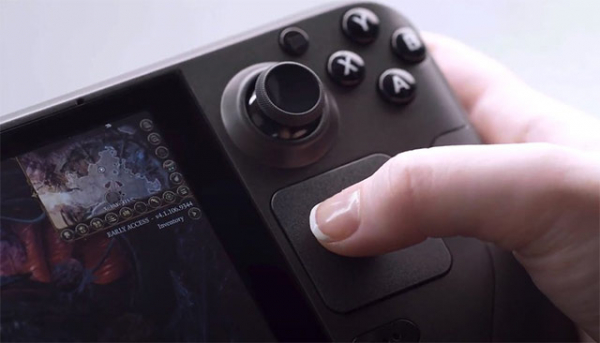
The AMD Van Gogh chip has a total of four cores and eight threads, theoretically enough to run almost any title available on Steam's Store smoothly. It might not be the first choice for you to install optimal graphics, but almost every game you're playing on Windows can run smoothly on the Steam Deck without any issues.
You can choose between the Steam Deck versions with an LCD or OLED screen, the OLED version has a significantly upgraded display to have higher contrast and more vibrant colors compared to the LCD version. It's also faster by 30Hz compared to the 60Hz LCD screen. However, the resolution remains the same at 1280x800p.
The total RAM capacity available to users in both versions is 16GB LPPDR5, and storage starts from 64GB eMMC up to 1TB NVMe SSD. Prices vary depending on the specifications and storage options users initially choose.
Connections include a 3.5mm headphone jack, two microphones, Wi-Fi and Bluetooth connections along with a Type-C port supporting DisplayPort 1.4. Users also have stereo speakers if they do not want to use headphones.
See more articles: The 5 best SSDs for Steam Deck
1.2 Nintendo Switch
The Nintendo Switch with the Nintendo Switch Dock is considered to have significantly weaker hardware compared to the Steam Deck. This is quite understandable since the Switch is also five years old and has its own exclusive operating system.

It is powered by a custom Nvidia Tegra X1 chip, using the Nvidia Maxwell architecture for the GPU, the same architecture found on the Nvidia Geforce 900 series graphics cards. Therefore, it is also more outdated compared to the RDNA 2 graphics architecture.
The total number of CPU cores on the Switch that users get is 4 and there is no Hyper-threading (Hyper-threading Technology). The RAM capacity is 4GB LPDDR4 running at 1600MT/s and storage options are 32GB or 64GB eMMC.
Although there is no NVMe SSD expansion option, the console allows users to add up to two terabytes of external storage.
Like the Steam Deck, the Switch also has LCD and OLED versions, with the OLED version being a bit more expensive, but with much better image quality compared to the LCD version. Unlike the Deck, the screen refresh rate remains the same, as well as the resolution of both versions is 1280x720p. Finally, its connectivity features include a 3.5mm jack for you to plug in gaming headphones, Wi-Fi, Bluetooth, USB Type C, and stereo speakers. In terms of performance, the Nintendo Switch is rated lower than the Steam Deck, but it is certainly still good with the titles currently available on it.
2. Performance
Just by comparing the specifications, it's clear that the Steam Deck is far superior and will be faster in gaming performance. However, when comparing both devices, users might be a bit surprised to find that the difference in performance theoretically isn't as significant as when comparing the specs.
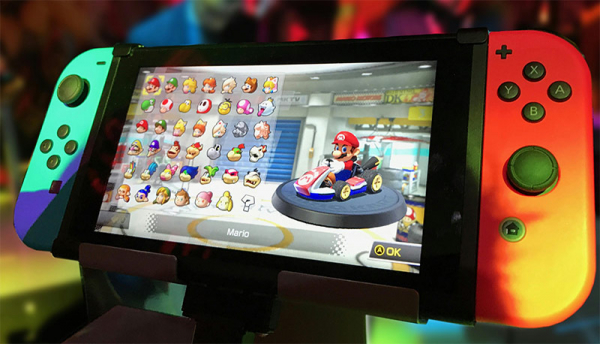
Of course, the Steam Deck's specs allow it to offer higher frame rates, but performance also depends on how well the game optimization is done specifically for the unique consoles of both.
However, perhaps the most important factor is to consider the games that both devices have because the game libraries of the Steam Deck and Switch are very different. Yet there are still many popular games available on both devices and therefore, comparing gaming performance between these two machines will also become easier.
Among a host of titles like Borderlands, Bioshock Infinite, Doom 2016, Hot Wheels, and Crash Bandicoot, the Steam Deck can always provide 60 FPS and overall better graphics compared to the Switch.
The Switch is rated as having flat, not vibrant and realistic game colors, many details missing and not exceeding 30 FPS because it cannot handle all the details like the Steam Deck. On the other hand, familiar titles like Stardew Valley, Terraria, and Assassin's Creed II then perform better on the Switch and run at a better frame rate, directly competing with the Steam Deck.
It all focuses on the level of intense graphics that users want to play. The Steam Deck will always be better for newer and more demanding games. On the Switch, light and simple games will be perfect for this gaming device.
3. Control
The Steam Deck has an inconvenient position at the left joystick, but this is to make room for the trackpad, something that the Nintendo Switch does not have. It has superior ergonomics and, although heavier, it does not make the user's fingers tired.

The position of the thumb may not be familiar to those who are used to using controllers with Xbox and PS. However, you will not find it too difficult to get used to the control mechanism of the Steam Deck.
Although the control sticks and buttons on the Switch meet basic requirements, the D-Pad is not very impressive. The large distance between the navigation buttons is not an enjoyable experience in some games. The D-Pad on the Steam Deck will definitely be better, even if it is designed in a not very ideal position.
The triggers on the Deck are also better and more convenient for users than on the Switch because they are Analog Triggers. Digital Trigger buttons only have a value of 0 or 1 in input. With Analog Triggers, you can set more options on this button like braking, boosting when the car is running to accelerate, and much more. This is a clear advantage of the Steam Deck over the Switch.
4. Software Support and Game Library
The Steam Deck uses the exclusive SteamOS 3.0 operating system, while the Nintendo Switch has its own Nintendo operating system. SteamOS is based on Linux and has developed quite well compared to Nintendo, and the Steam Deck also has a large game library.
You will have about 4500 games on the Switch, while on the Steam Deck, this number is over 73,000. This makes the Steam Deck significantly superior to the Nintendo Switch, especially when the Steam store often receives newer games every day.
5. Portability
Portability is perhaps the main reason why the Steam Deck and Nintendo Switch exist. These are devices that are easy to carry anywhere in a small bag or even you can allocate a slot for this gaming device in your pants pocket if it's a bit larger than normal. Here, the Switch is the device with a greater advantage because of its size.
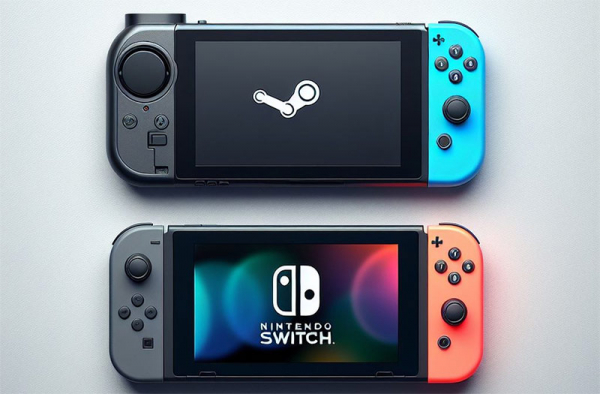
With dimensions of only about 203.1 x 102 x 13.9 millimeters and weighing about 300 grams, the Switch is almost half the size of the Steam Deck. But carrying the Deck is also not impossible as the size of the Deck is only 29.72 cm in length, 11.68 cm in height, and 4.9 cm in thickness.
In terms of weight, the Nintendo Switch only weighs 420 grams compared to 669 grams of the Steam Deck. The OLED versions of both systems are a bit lighter, but here the Switch also reduces 30% of the weight, from 420 grams to just 322 grams. The Steam Deck "lazy to exercise" so it only reduces 19 grams of weight, equivalent to 5% of the weight
6. Battery Life
In terms of battery life, both handheld gaming devices are "six of one, half a dozen of the other." Although the Steam Deck has a larger battery capacity, the actual usage time depends a lot on the type of game you play. Typically, both devices only last about 2-3 hours when playing continuously. The manufacturer advertises up to 8-9 hours of playtime, but in reality... let's not talk about it! In general, in terms of battery, "neither side is better than the other."
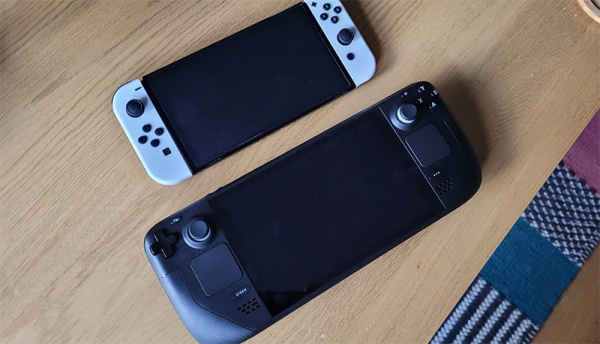
However, there is also a small difference. The Steam Deck charges faster than the Switch thanks to 45W fast charging support. The USB Type-C port on the Switch does not have this feature, which is a bit unfortunate because the Type-C technology developed after the Switch was launched. The full charging time of the Steam Deck only takes about 2.5 to 3 hours, while the Switch needs more than 3 hours to be fully charged.
7. Price
The key issue is which device is "good - cheap - nice" better. Buying a device that is 2-3 times better but the price goes up 3 times also does not satisfy the need. Although the Steam Deck and Nintendo Switch do not run the same operating system or have the same configuration, they are still direct competitors because they both serve the "handheld gaming" need.
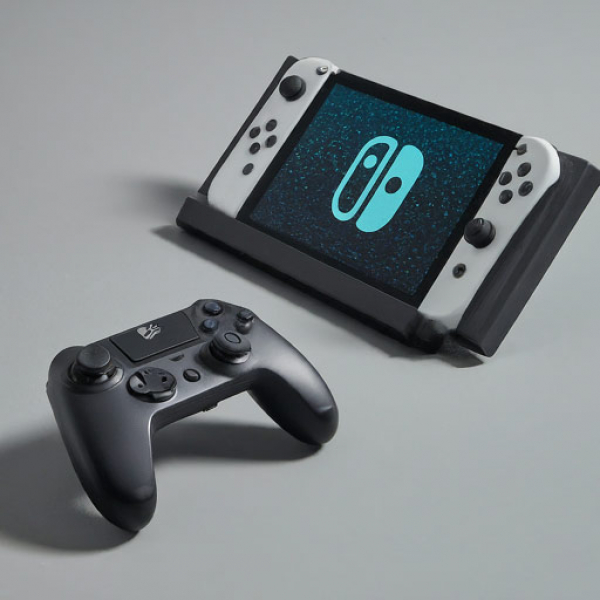
Starting with the Steam Deck, the basic 64GB version costs about 10 to 11 million VND, later replaced by the 256GB version with a higher price of 1 million. The "fancier" OLED version then 512GB is 17-18 million VND and 1TB has the highest price of about 21-22 million VND.
Nintendo Switch has versions including Lite, regular LCD, and OLED. The most affordable Lite version only costs from 3-4 million VND, the regular LCD version has a price from 5-6 million VND, and the OLED version from 8-9 million VND. Of course, configuration, software, and connectivity also contribute to the price, but overall, the Switch is "more comfortable" for most users' "wallets" than the Deck.
Conclusion
In recent years, the handheld gaming market "stirred" with many new players jumping in, such as Ayaneo with Asus. However, the Steam Deck and Nintendo Switch are still the "top sellers" best-selling thanks to the affordable price and popularity. Although the Steam Deck has sold nearly 5 million units, the Switch still far outpaces with nearly 140 million units sold by 2024.
However, this number also needs to be "carefully considered" because the Steam Deck was born later than the Switch by more than 5 years. Recalling the time when the Switch was first launched, this device seemed to have no competitors. Now with ROG Ally and many other devices joining the game, the market share of the Switch is also "divided" out.
In summary, when directly compared to the Switch, the Steam Deck confidently with stronger hardware, capable of fighting the "hot" games of today, something that the Switch can hardly do. A huge game library, an "easy to use" operating system, a diverse game library allows players to "tinker" more freely than the Switch. Furthermore, superior connectivity, more "breathable" storage options, and the Deck's control response "much sharper" are a direct threat to the Nintendo Switch.
